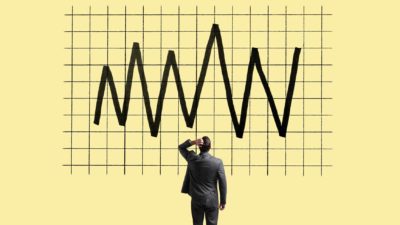So, this has been a bumpy week on the ASX.
And on global markets.
Traders seem to not know which way to jump, thanks to comments by the US Fed Chair, Jerome Powell, that inflation may not be transitory at all, and the new Greek letter we all learned over the past seven days, thanks to a mutation of the pandemic virus.
So…
I want you to remember that volatility isn't unusual.
I want you to remember that, just 20 short months ago, we had the fastest plunge — and recovery — in stock market history.
I want you to remember that the list of 'things to worry about' is always long, and always breathlessly reported.
And I want you to remember that as of June 30 this year, Vanguard tells us, $10,000 invested on the ASX three decades earlier had climbed to $160,000, a compound gain of 9.7%, per annum, despite 30 years of risks, real and imagined, and a whole heap of market, geopolitical and social ructions.
(For the record, that's before taxes and brokerage fees, but also not including franking credits.)
And over that time?
9 Australian Prime Ministers (including Kevin Rudd, twice).
6 US Presidents.
(in both cases, from either side of the House and the aisle.)
Including the GFC, the GST, the Bali Bombing and the World Trade Center attacks.
That 30 year period started with us in recession. And had one at almost the very end.
It includes Brexit, the dot.com crash, and yes, the COVID crash.
If I'd told you, in 1991, that those things would all happen in the next 30 years, you may not have invested.
That would have been an almighty mistake.
There is no shortage of reasons not to invest now.
No shortage of 'But what about…' fears.
Am I saying the next 30 years will be the same as the last 30 years?
Yes.
And no.
I can't make promises. It would make ASIC unhappy, but, more importantly, it would be deeply unethical and improper. No-one can ever predict the future. And the more certain someone's prediction, the more wary of them you should become.
But, asked for my expectations, I would tell you that I'm not sure why the future would be meaningfully different to the past.
The last 30 years' returns have been meaningfully similar to the 70 or so years before that.
And if I was a betting man, I'd say the next 30 years' worth of headlines (even if we're getting them delivered in the Metaverse in 2051) will be similar in their breathless risk-bearing to the last 30.
And I want to close by sharing a story written by our US colleagues in our Fool Wealth business.
It's a story about a US company. Lightly edited, here's how it goes:
"We looked at its daily share price performance from January 2011 through October 2021 and discovered several notable findings:
"34% of the time, the company's shares were 10% or more below their high.
"308 trading days — more than one year of trading days — it was 20% or more below its high.
"Four out of the last 10 calendar years — or 40% of the time — it underperformed the S&P 500."
Dud stock?
Decent stock?
Or have you worked out I'm setting you up for the big reveal?
The company?
Amazon.com, Inc. (NASDAQ: AMZN) (I own shares).
And the net result of being below a high for one-third of the last 10 years?
The net result of being 20% down one-tenth of the time?
The net result of losing to the market in 40% of those years?
Well, according to my colleagues, over that ten year period Amazon's value increased by roughly 1,800% (18 times!), which is a compound annual growth rate of over 31%.
Again, I'm not predicting Amazon's future will be the same. I own shares and we've recommended the company, but this isn't a 'buy Amazon' pitch.
It's the backward-looking story of what long term success looked like, despite those less-than-flattering stats.
Volatility?
It's here to stay.
But so, I expect, are attractive long term returns, for patient, diversified investors.
If you ride out the storms.
Fool on!









